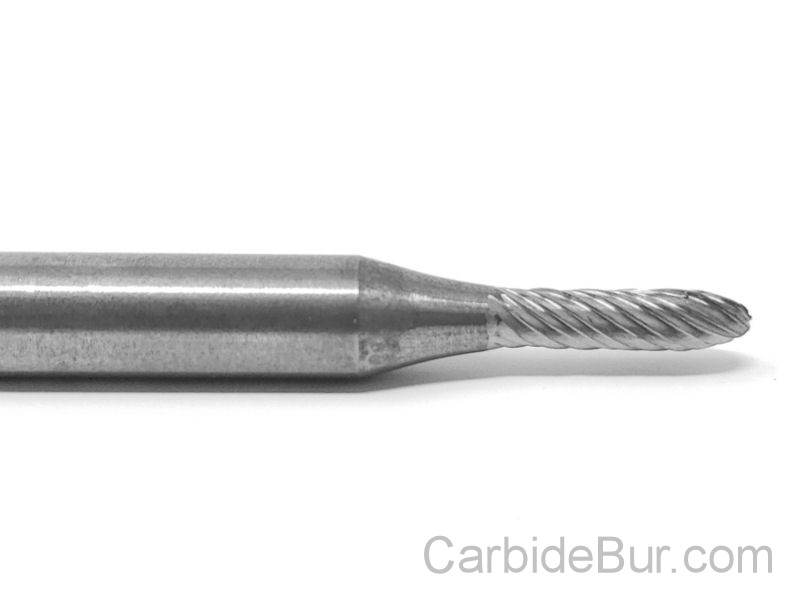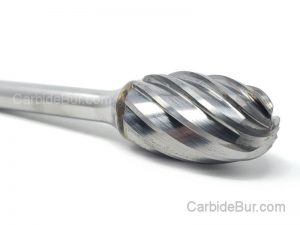How to Choose the Perfect Carbide Burrs for Die Grinders
When it comes to metalworking, the right tools can make all the difference in achieving precision and efficiency. Carbide burrs are essential attachments for die grinders, offering versatility in cutting, shaping, and engraving various materials. With an array of burr shapes, sizes, and materials available, selecting the perfect carbide burr for your specific needs can significantly enhance your metal fabrication projects. Whether you’re a professional metalworker or a DIY enthusiast, understanding how to choose carbide burrs tailored to your application is key to optimizing your metalworking tools. In this guide, we’ll delve into the nuances of burr selection, ensuring you get the most out of your die grinder and achieve top-notch results in your fabrication work. For more detailed insights, check out this comprehensive guide to carbide burr shapes and their uses.
Carbide Burrs for Die Grinders
Understanding Carbide Burrs
This section explores what carbide burrs are, their importance in metal fabrication, and common shapes used in various applications. Understanding these fundamentals will guide you in making informed decisions when selecting burrs for your projects.
What Are Carbide Burrs?
Carbide burrs are rotary tool attachments made from tungsten carbide, a material known for its hardness and durability. They are used to cut, shape, grind, and remove excess material in metalworking and other applications. The unique composition of tungsten carbide allows these burrs to maintain their sharpness and withstand high temperatures during use.
Carbide burrs come in various shapes and sizes, each designed for specific tasks. Their versatility makes them an essential component in any metalworker’s toolkit. For more detailed information on carbide burrs, you can visit carbideburr.net.
Understanding the different types of carbide burrs and their applications can help you choose the right tool for the job, enhancing both the quality and efficiency of your work.
Importance in Metal Fabrication
In metal fabrication, precision and efficiency are paramount. Carbide burrs are crucial in achieving these outcomes due to their ability to perform multiple functions, including deburring, shaping, and surface finishing.
-
Durability: Carbide burrs last longer than other burr types because of their robust material composition, reducing the frequency of replacements.
-
Versatility: They can be used on a variety of materials, including steel, aluminum, and cast iron, making them indispensable in diverse fabrication tasks.
-
Efficiency: By providing clean cuts and smooth finishes, carbide burrs minimize the need for additional processing, speeding up project timelines.
For more insights on the role of carbide burrs in metal fabrication, this guide is a useful resource.
Common Burr Shapes Explained
Carbide burrs come in a variety of shapes, each designed for specific purposes. Understanding these shapes can help you select the right burr for your needs.
-
Cylinder: Ideal for flat surfaces and removing material quickly.
-
Ball: Used for creating concave cuts and hollowing out areas.
-
Oval: Best for rounded edges and contouring.
These shapes are further explained in this article, which provides a comprehensive overview of their uses and advantages.
Selecting the Right Burr Shape
Choosing the right burr shape is crucial for optimizing your metalworking tasks. This section will guide you on selecting burr shapes for different applications and matching them to various metal types.
Shapes for Different Applications
Selecting the right burr shape depends on the specific task you aim to accomplish. Here’s a step-by-step guide to choosing the appropriate shape:
-
Identify the Task: Determine whether you’re cutting, shaping, or engraving.
-
Consider the Material: Different shapes work best with specific materials. For instance, a round nose can be ideal for complex curves.
-
Evaluate the Finish: Decide on the finish quality you require. Some shapes offer smoother finishes, while others are more aggressive.
For more detailed guidance, explore this resource on selecting the right burr shape for your application.
Matching Burr Shape to Metal Type
Different metals require specific burr shapes to achieve optimal results. Here’s a table illustrating the best burr shapes for common metals:
|
Metal Type |
Recommended Burr Shape |
|---|---|
|
Steel |
Cylinder, Oval |
|
Aluminum |
Flame, Inverted Cone |
|
Cast Iron |
Ball, Tree |
Understanding this match can significantly enhance the precision and efficiency of your fabrication work. The selection guide provides more insights into this precise matching.
Carbide Burrs for Die Grinders
Size Matters: Choosing Burr Sizes
The size of the carbide burr impacts the precision and efficiency of your work. This section will explore how size affects metalworking and guide you in selecting the best sizes for your projects.
Impact of Burr Size on Precision
Burr size plays a critical role in determining the precision of your work. Smaller burrs are ideal for detailed work, while larger burrs are better for removing large amounts of material.
-
Small Burrs: Provide finer control, ideal for intricate detailing and finishing.
-
Large Burrs: Suitable for aggressive material removal and rough shaping.
Understanding these differences will help you choose the right size for your project, ensuring that you achieve the desired precision.
Selecting Sizes for Efficiency
Choosing the correct size is not just about precision; it’s also about efficiency. Here’s how to select for efficiency:
-
Consider the Task Scale: For large-scale projects, larger burrs can save time.
-
Evaluate Tool Compatibility: Ensure the burr size is compatible with your die grinder.
-
Balance Speed and Precision: Choose a size that offers a balance between speed and the level of detail required.
These guidelines will help you optimize your workflow, making your metalworking process more efficient.
Material Considerations in Burr Selection
The material of the burr is a key factor in its performance and longevity. This section will compare different materials and discuss how material choice affects the lifespan of your burrs.
Comparing Burr Materials
Carbide burrs are typically made from tungsten carbide, but there are variations. Here’s a comparison:
|
Material |
Durability |
Cost |
|---|---|---|
|
Tungsten Carbide |
High |
Moderate |
|
High-Speed Steel |
Medium |
Lower |
Tungsten carbide offers superior durability, making it suitable for heavy-duty tasks. In contrast, high-speed steel might be less durable but more cost-effective for lighter applications.
How Material Affects Longevity
The material of a burr directly influences its lifespan. Tungsten carbide, for example, offers exceptional longevity due to its hardness. Here’s how material affects burr longevity:
-
Hardness: Harder materials maintain sharpness longer, reducing the need for replacements.
-
Heat Resistance: Materials that resist heat degradation last longer, especially in high-speed applications.
Investing in quality materials can lead to longer-lasting tools, ultimately saving money and time on replacements.
Practical Tips for Choosing Carbide Burrs
This section offers practical advice for selecting carbide burrs that meet your specific metalworking needs and ensure compatibility with your die grinder.
Assessing Your Metalworking Needs
To choose the right carbide burrs, start by assessing your metalworking needs. Consider the following:
-
Type of Metal: Determine the metal types you’ll be working with most frequently.
-
Project Scale: Consider whether your projects are small-scale or involve large, industrial tasks.
-
Desired Finish: Decide on the quality of the finish required for your work.
These factors will guide you in selecting burrs that meet your specific requirements. For more tips, visit this guide.
Ensuring Compatibility with Die Grinders
Ensuring that your carbide burrs are compatible with your die grinder is crucial for effective operation. Here’s how to ensure compatibility:
-
Check Shank Size: Ensure the burr’s shank matches your grinder’s collet size.
-
Consider Power Requirements: Verify that your grinder can handle the burr’s size and material.
-
Review Speed Ratings: Match the burr’s speed rating to your grinder’s RPM capabilities.
These steps will help you avoid damage to both the burr and the grinder, ensuring a smooth and efficient metalworking process.
The Power of Carbide Tools for Precision and Durability
Transform Your Workshop: The Power of Carbide Tools for Precision and Durability You pour hours into your projects, yet something feels off. Your workshop tools might be holding you back. Enter carbide tools—the secret to [...]
The Importance of Carbide Bur Bits for Every Artisan
Mastering Your Craft: The Importance of Carbide Bur Bits for Every Artisan If you've ever struggled with a dull or inefficient tool, you know the frustration it brings to your workbench. Enter carbide bur bits—a [...]
Why Manufacturers Choose Durability and Performance
Carbide vs. Other Materials: Why Manufacturers Choose Durability and Performance When it comes to choosing the right material for your tools, not all options are created equal. Have you ever found yourself frustrated by frequent [...]
Selecting the Right Tools for Precision and Efficiency
Boost Your DIY Confidence: Selecting the Right Tools for Precision and Efficiency Ever felt like your DIY projects just aren't hitting the mark? You're not alone. Many enthusiasts struggle with precision because they haven't found [...]
How Carbide Bur Bits Enhance Your Craftsmanship
Precision and Performance: How Carbide Bur Bits Enhance Your Craftsmanship You've been there—hours spent crafting only to face uneven edges or rough finishes. Precision tools make all the difference, and carbide bur bits are the [...]
Why Carbide Bur Bits Are the Secret to Precision Cutting
Time to Upgrade: Why Carbide Bur Bits Are the Secret to Precision Cutting Tired of tools that just don’t cut it anymore? It's time to ditch those outdated bits and embrace carbide bur bits for [...]
The Benefits of Using Carbide Bits in Your Projects
From Hobby to Mastery: The Benefits of Using Carbide Bits in Your Projects You may think you've tried every tool out there, but there's one secret weapon you might have overlooked—carbide bur bits. Imagine transforming [...]
Turning Passion into Profits with Carbide Bits
Monetize Your Craft: Turning Passion into Profits with Carbide Bits You spend hours perfecting your craft, but your creations seem to collect more dust than dollars. Imagine turning those hobbies into a thriving business that [...]
Why DIY Enthusiasts Are Raving About Carbide Bur Bits
Why DIY Enthusiasts Are Raving About Carbide Bur Bits Think you have all the DIY tools you need? Think again. Carbide bur bits are quickly climbing the ranks as a home depot must-have, and for [...]
From Cheap Grinders to Quality Carbide Bur Bits
From Cheap Grinders to Quality Carbide Bur Bits: A Comparison Guide Think cheap grinders are a bargain? Think again. Many DIY enthusiasts and professionals fall into the trap of saving a few bucks on these [...]
How Die Grinder Tool Bits Inspire Metalworking and Woodworking Innovations
Craft Your Masterpiece: How Die Grinder Tool Bits Inspire Metalworking and Woodworking Innovations Imagine transforming a simple block of metal or wood into an intricate masterpiece. That's the magic of die grinder tool bits. For [...]
Precision Grinding Secrets Every Entrepreneur Craftsperson Should Know
Precision Grinding Secrets Every Entrepreneur Craftsperson Should Know You pour hours into your wood or metal projects, only to find the finish isn't quite right. Frustrating, isn't it? Precision grinding can be your game-changer, ensuring [...]



Leave A Comment
You must be logged in to post a comment.